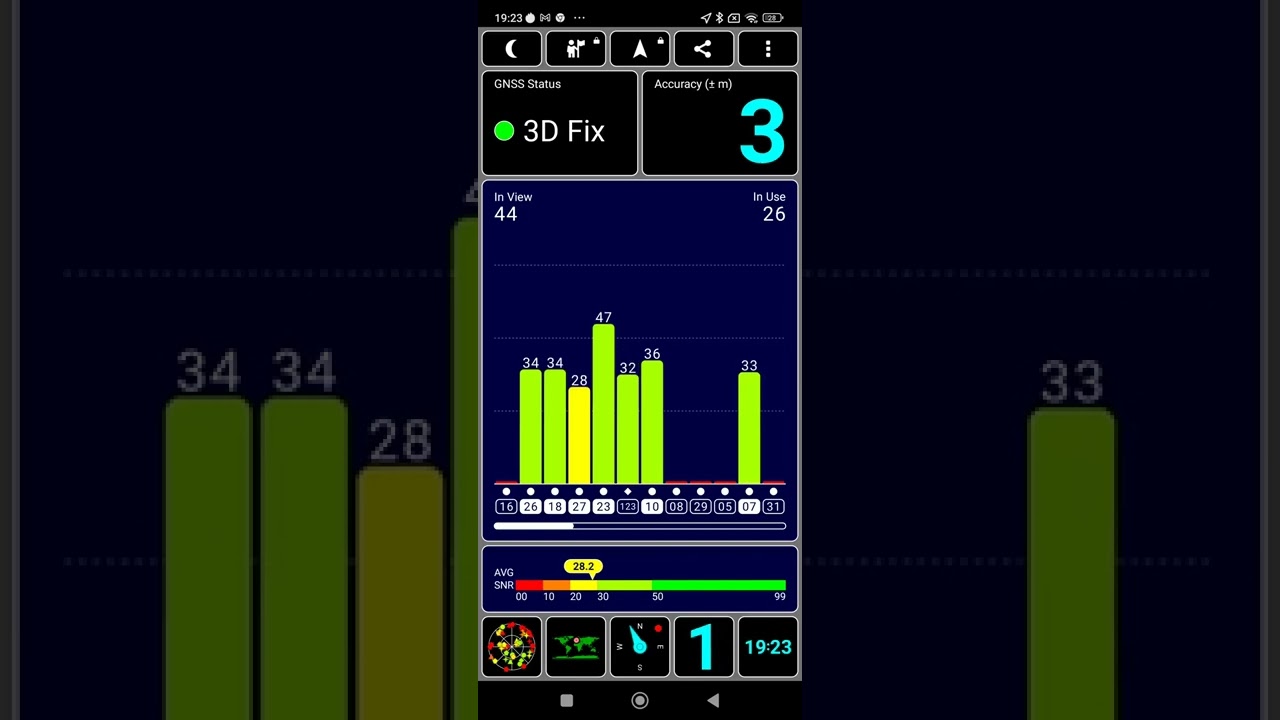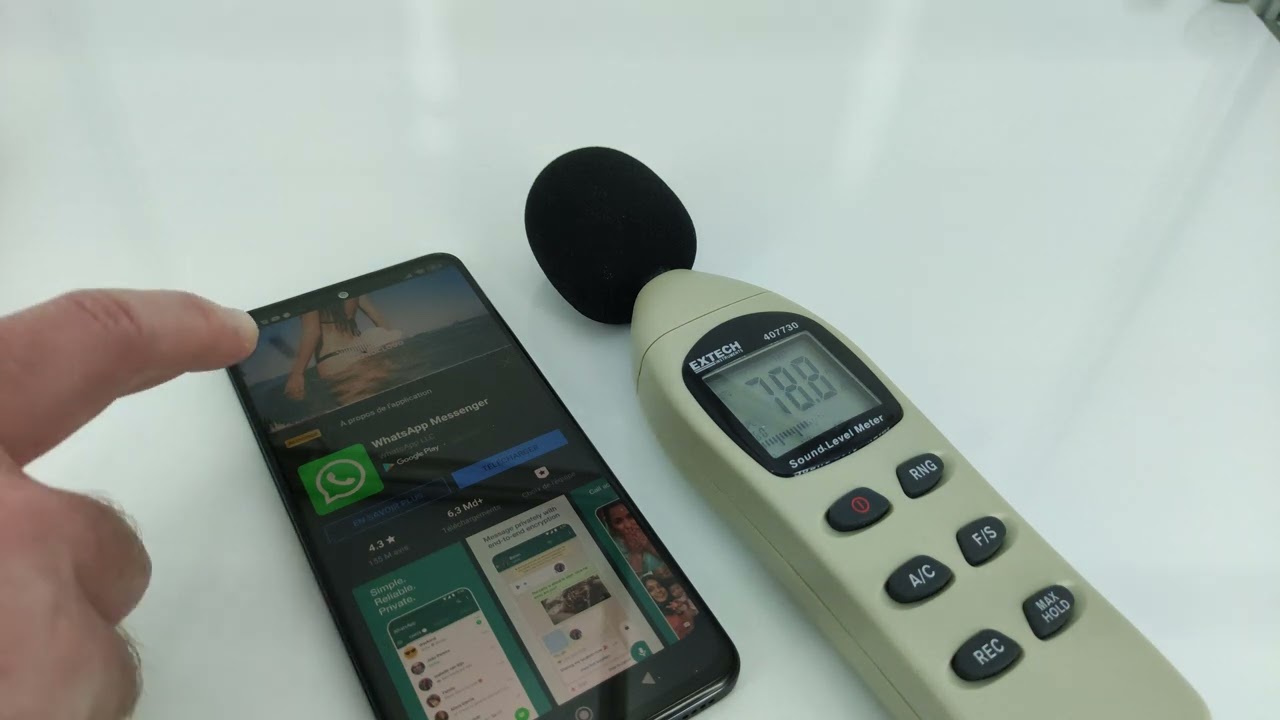Smartphones
Redmi Note 11 Pro test / review
Published on: 17-02-2022 / Modified: 15-04-2023
I've been testing the Redmi range since the Redmi Note 5, so I have enough perspective to see how these phones have evolved over the years. If I compare the "old" Redmi Note 5 that I still have with this new Redmi Note 11 Pro, I can clearly say that these two phones no longer have much in common. The Redmi range has evolved into a more premium model with a neater exterior appearance and specifications that evolve from year to year. The Redmi Note 11 Pro 5G continues in this direction by giving itself an iPhone look (larger and heavier) with this new format and by using the ingredients that have made the brand successful in the past. The Pro version has always focused on the photo part, this will once again be the case with this new model, we find the Samsung sensor which produces photos of 108 million pixels. It's not new, but in this price range, it's still a strong argument. Xiaomi manages to balance its efforts between evolution and revolution each time to stay ahead of the competition, so I'm going to see if the recipe still works, especially since this phone now costs much more than previous generations and the competition is not not sit idle.
Redmi Note 11 Pro 4G
Redmi Note 11 Pro 4G / Aliexpress (259€-319€)
Redmi Note 11 Pro 5G
Redmi Note 11 Pro 5G / Aliexpress (279-339€)
Manufacturer web site:
https://www.mi.com
Structure of my tests
I test the phones according to a pre-established structure (see below) to provide you with as much information as possible. Unfortunately, this takes a long time. Some tests like network performance tests take several days and for photo tests I sometimes have to wait until the weather is suitable to take pictures in good conditions. I am therefore obliged to publish the tests step by step, so I invite you to come back if the test is not complete at the time of your visit.Price Redmi Note 11 Pro
The list below shows the prices for the Redmi Note 11 Pro from more than 50 sites around the world. If you are not satisfied with any price, you can subscribe to a price alert to be the first to be notified when the price drops.The above links are affiliate links from companies such as Amazon, Gearbest, Aliexpress,... If you appreciate my work, I would be grateful if you could purchase these products through these links. It costs you absolutely nothing but I get a small commission that allows me to buy the material I test. Thank you very much!
Timeline
February 15, 2022: I received the Redmi Note 11 Pro 5G, the test can startFebruary 18, 2022: phone launched in Europe, my test will clearly not be finished but I will update the article depending on my test progress
Why this phone?
As I wrote in the introduction, I have been testing Redmi phones since the Redmi Note 5 and I have always appreciated these models even if some did not bring much, they were always one step ahead of all other brands in this price range. I am thinking in particular of the democratization of amoled screens, stereo sound, high-performance cameras, ... all these elements already existed in the middle or high end but Xiaomi made them accessible to a wider audience.What will this new Redmi Note 11 Pro 5G bring? The change starts with the exterior, this new Redmi is very freely inspired by the iPhone with its rounded corners and straight edges, Redmi had not yet tested this format. I will return to this point later in the test. The Redmi Note 11 Pro 5G marks the return to a Mediatek architecture which should increase the performance of this model by around twenty percent compared to the previous version. The phone uses the 108 million pixel sensor that I already tested on the previous version, I'm curious to see if Xiaomi has managed to improve its image processing. There remains the question of the price (all prices are on the rise), will Redmi continue to be able to market this type of phone for less than 250€?
Unpacking
First configuration
The Redmi Note 11 Pro is released under MIUI 13, so the setup procedure will follow the same steps as other phones under MIUI 13, I did not notice any big changes with the previous version. The graphical interface is more pleasant and Xiaomi has removed the screens to register for its cloud, this is undoubtedly a very good thing for a large majority of users but I think they have found another source of income . At the end of the configuration of the phone, you will be able to activate dynamic wallpapers and by activating this feature, the phone will ask you to accept cookies from an advertising intermediary. Activating this feature will therefore allow Xiaomi to monetize the data of its users. Don't cry foul right away, it's very clever of them because that's what everyone does on the internet and here it doesn't ask you to register somewhere. If you are allergic to this, you can opt out of information sharing.Finish
The back of the phone is covered with a very smooth metallic-looking surface (but it's glass and polycarbonate) that reflects light from different angles. The smooth surface does not slip too much, the grip is good. The photo block is not inspired by the iPhone, however, this photo block comes out quite strongly at the back and it is composed of two levels depending on the sensor. The 108 million pixel sensor obviously needs the space and this can be seen very clearly in the following photo:
I find that this new format is very successful, the screen space is well exploited and despite the size, the weight barely exceeds 200 grams. We are obviously far from the formats of the iPhone but it is a fully assumed choice. This new format should in any case attract new eyes to Redmi.
Specifications
The information below comes from the Device Info HW application. The application provides detailed technical information about the tested phone. Xiaomi is a champion of re-usability, we often find the same components on a whole series of phones, but this Redmi stands out on several points. It shares the same CPU/GPU architecture as the Poco M4 Pro but the screen is different, it's a gtx8, I haven't had the opportunity to test this screen yet. The accelerometers, gyroscopes and fingerprint sensor are also different. The memory is LPDDR4X type and the storage is UFS 2.2. This phone is therefore quite different from the other models in the range.
CPU / GPU Performance
There are two versions of the Redmi Note 11 Pro, a 4G version and a 5G version. The 4G version (version tested) runs under a Mediatek architecture where the 5G version runs under a Qualcomm architecture which is more efficient. My version therefore runs on a Mediatek architecture, which means that the CPU, GPU, wifi, GPS, Bluetooth are part of a set that will be the same as all phones using the same architecture. The results of my tests will therefore also be valid for other phones such as the Poco M4 Pro 4G.
For the graphics part, this phone is based on a Mali G57 which offers mid-range performance and with this kind of hardware you can play almost all the games with sometimes a degradation in terms of details.
Benchmark Antutu/3DMark
I got a score of 275835 points on Antutu, this ranks this phone in a comfortable average. This level of performance will allow you to use this phone in almost all conditions, except that for demanding games, you will probably have to reduce the level of detail to play in good conditions. Outside of gaming, this level of power is more than enough for day-to-day use.This level of performance is very similar to the previous generation and if you want more performance with the same smartphone, you will have to go for the 5G version which offers higher performance than this version . You should exceed 400,000 points with Antutu.
Gaming
To test the performance in game, I download the mobile PUBG game and evaluate the in-game experience, graphics level and depth of vision. This game is quite demanding and should help you evaluating the performance of a phone.

Network performance
The Redmi Note 11 Pro supports most 3G and 4G frequencies in Europe but there is a 4G version and a 5G version, so be sure to check which version you are buying. The 5G version supports a large number of frequencies which should also cover the majority of uses in Europe.Signal 4G (from December 2020)
I decided to change the methodology for measuring the network because I noticed that the configuration of the mobile network changes over time. This makes it more difficult to compare phones because the conditions are no longer exactly the same.
To overcome this problem, I set up a device that captures 24 hours a day about ten parameters from the mobile network (ex: cell id, rssi, rsrq, snr, frequency,...). I then place the phone next to the device for 24 to 48 hours taking the same measurements so that I can compare them.
Overview of the phones tested with this methodology
Download/Upload speed
To test the download speed, I have identified some 4G cells offering good performance where I test all my devices several times to see what download and upload speed they can achieve.
Wifi performance
To test a phone's ability to receive the network properly, I take measurements near my router and then remotely (and always at the same place). This gives me an average in dBm where a value of -90 dBm indicates poorer performance than a value at -30 dBm.Wifi signal
I measured an average signal of -13 dBm near the router, this is an excellent score showing excellent wifi sensitivity. From a distance I measured -55 dBm in 2.4Ghz, here too it is an excellent score. The signal is a little less good at 5Ghz but that's normal, this frequency does not have as good a range as 2.4Ghz.
Download/Upload speed
To test the speed in Wifi, I connect to my router in 2.4Ghz and 5Ghz (if available) and use the Ookla application to measure the speed.
GPS performance
To test the accuracy of the GPS signal, I use two positioning applications to evaluate the difference between the actual position and the position indicated by the phone. This test is done outdoors with nothing to obstruct the signal. An accuracy level of up to 3 meters can easily be corrected by an application (e.g. Google Maps).

Battery range
To test battery life I developed an application that measures the battery level minute by minute until the battery is empty. This application consumes about ten percent of the phone's resources and I do a test with 100 brightness. This test aims to reproduce a contemplative use of a phone (e.g. surfing the internet, reading articles, spending time on social networks). These results are not valid for intensive gaming/streaming use. Not yet available / testedPhoto camera test
To test the quality of photos produced by a phone, I do a technical test (resolution, sharpness, chromatic aberration,...) in studio (identical conditions) to evaluate the technical part objectively. From the second half of 2020, I built my own laboratory to take completely objective technical measurements. I then take pictures in real conditions to see how the camera performs. I then evaluate these photos according to my criteria but I publish the photos so that you can evaluate the result according to your criteria.Hardware
The Redmi Note 11 Pro is equipped with several cameras on the back:- Samsung S5KHM2 with 108 megapixels (also available on the Poco M4 Pro 5G, Redmi Note 11s, Motorola Edge 20 lite,.. .). I have already tested this sensor several times and its main weakness came from the colorimetry, so I will see if Xiaomi has corrected this problem on this version.
- Omnivision OV8856 with 8 million pixels for ultra wide angle photos.
- GalaxyCore GC02m for macros
At the front, I find a Hynic Hi1634 16 million pixel selfie sensor.
Photo quality
Photo quality (indoor/studio)
The studio test is carried out under the same conditions so that the results can be compared on an equal basis. I calibrate my lighting for each test to obtain the same brightness and colour temperature. This test is a preliminary analysis of the technical qualities of a camera. Most phones fail this test, so you should also read the results of the other tests in the following paragraphs.
Main sensor Samsung S5KHM2 / 108 Million pixels
This sensor is capable of producing photos in 108 million pixels, but what use can it be on a phone? The answer is quite simple. Phones don't have optical zooms like on real cameras. Xiaomi has therefore circumvented the problem by producing very large photos in which you can zoom. Here are some examples at different zoom levels:
12%
Omnivision OV8856 / 8 million pixels
Photo: technical test
I was inspired by industrial technical tests to create my own technical test to evaluate the technical quality of a camera. This test is an objective assessment of a camera's ability to render a scene correctly.
I test the following elements:
- centre sharpness, peripheral sharpness
- colour fidelity based on 24 reference colours
- level of chromatic aberration
- dynamic range (ability to capture dark and light areas without loss)
- distortion
The technical evaluation may differ from the subjective evaluation as the feeling of a photo will be influenced by the processing provided by each manufacturer.
Main sensor Samsung S5KHM2 / 108 Million pixels
This sensor is capable of producing photos in 108 million pixels, but what use can it be on a phone? The answer is quite simple. Phones don't have optical zooms like on real cameras. Xiaomi has therefore circumvented the problem by producing very large photos in which you can zoom. Here are some examples at different zoom levels:
12%
Omnivision OV8856 / 8 million pixels
Outdoor photo quality
I haven't been lucky enough to have good weather the last few days and storm Eunice clearly didn't help me. I quickly went to shoot between storms so I could post some pics before the launch of this phone. The conditions weren't ideal for taking good pictures but it shows how the camera behaves in bad conditions. I took many photos in the usual places and sometimes alternating between normal mode, HDR/AI and night mode. Night mode photos are the darkest, so I don't recommend using night mode in broad daylight. Usually it helps unclog photos but not with this phone. AI mode adds a layer of blue on the image, sometimes it works well, sometimes not so I prefer to abstain.
Samsung S5KHM2 / 108 million pixels
If I use 108 megapixel mode and zoom to 40%, I get this:
Omnivision OV8856 8 million pixels
Test photo / night
Not yet available / tested
Video quality
Stabilisation

Video normale conditions

Video low light
Not yet available / tested
External audio quality
This test is intended to give you an overview of the volume and sound quality during calls and when listening to music through the external speakers.

Audio / music quality
The Redmi Note 11 Pro has two external speakers arranged asymmetrically at the top and bottom of the phone, so they do not deliver sound from the same place on the phone. The sound produced by these speakers is of good quality for this kind of phone. The bass and treble sounds are fairly well represented. The sound is not excessively powerful but it is rather average.
Audio/call quality
In-call volume is pretty average, I measured about 50db, that's quite a volume Medium. With the loudspeaker the volume increases to go towards 70 dB, it is much better here. I find that the sound produced by the monitor speaker is a little muffled, a bit like the high-pitched sounds have been smoothed out, it does not affect the understanding of the voice but the frequency range seems narrower.
Audio quality (headphones)
To test the quality of the phone's audio output, I connect the device's audio output to a measuring tool, then play sounds on all frequencies and measure the differences between the original sound and the sound produced by the phone. In this way I measure the phone's ability to correctly reproduce all sounds.Screen quality
To test the screen, I use a colorimetric probe that measures the color accuracy of a screen, as well as other parameters to see if a screen is able to correctly reproduce an image. I also test the brightness level to determine if the screen will be able to display an image in full sunlight.Colorimetry
On the other hand, the contrast is excellent, this is an amoled screen with deep blacks and a fairly wide viewing angle.
Brightness / Contrast
The screen's base brightness is just over 420 cd/m², which allows the screen to be read in almost any environment except direct sunlight. To increase the brightness, you have to activate the sun mode in the screen settings and with this mode I obtained a brightness of 662 cd/m². With such a level of brightness, you will no longer have a problem reading the screen under the sun. This surplus of brightness only engages in the presence of strong light, your battery life will therefore not be affected (unless you remain exposed to very strong light).
Biometry
Not yet available / testedOperating system
Not yet available / tested
Encoutered bugs
Not yet available / testedAccessories Redmi Note 11 Pro
Compare Redmi Note 11 Pro with the others
Test / Review conclusion
I have tested many phones from the Redmi Pro range and in less than 3 years these phones have established themselves as a reference in this price range using the photo as a selling point. This new Redmi Note 11 Pro uses the same photo sensor as the previous generation and the 4G version offers more or less the same performance. It is therefore not on these criteria that this new generation will stand out unless you take the 5G version which offers better performance. The level of finish has gone up a notch, this new design inspired by Apple is rather successful and will give a more serious and more accomplished side to the Redmi, but the interest of this phone does not stop there. I have noticed a few other improvements that are going to help this phone grab a few points from the competition and speaking of competition, I think the biggest competitor for this phone is the Redmi Note 10 Pro.
The Redmi Note 11 Pro uses the 108 Mpixel photo sensor of the previous version but I think that the photo processing has been improved because I do not find the too warm colorimetry of the version former. I didn't have good weather to finalize this article but the Samsung sensor did a good job in difficult conditions. For the video, it's a bit the same observation, I just regret the absence of 4k but the quality in 1080p is good. Video stabilization has also been improved.
The amoled screen was already excellent on the previous version, this is again the case for this version. In this price range, there are still many IPS screens that cannot compete with this type of screen. The addition of 120hz drives the point home even more because finding a good amoled screen with 120hz for less than 300€ is still not very common.
The sensitivity to the 4G signal of the 4G version is excellent, it is the same for the wifi part but I was a little disappointed with the GPS signal which could have been a little better.
This phone is not a thunderbolt in terms of performance but it offers good fluidity on a daily basis, there are only for big games where you will have to reduce the level Retail.
This new Redmi does not bring a revolution, it should rather be seen as an optimization of the range which will allow it to maintain its reference position in its segment by taking up the good things of the previous version and bringing some new features and improvements. You will undoubtedly find equivalent models at Samsung but these will be much more expensive.
Strengths
- photo quality
- screen quality
- 4G and wifi network sensitivity
- battery life
- trim level
Weaknesses
- imposing photo block on the back of the phone
- average GPS signal
- average volume in calls
- no 4k for video
Alternatives to this product
Not yet available / tested
 LAURENT WILLEN
LAURENT WILLENHead of myself on this blog
I share my passions on my blog in my free time since 2006, I prefer that to watching nonsense on TV or on social networks. I work alone, I am undoubtedly one of the last survivors of the world of blogs and personal sites.
My speciality? Digital in all its forms. I have spent the last 25 years working for multinationals where I managed digital teams and generated revenues of over €500 million per year. I have expertise in telecoms, media, aviation, travel and tourism.










































Questions/Comments